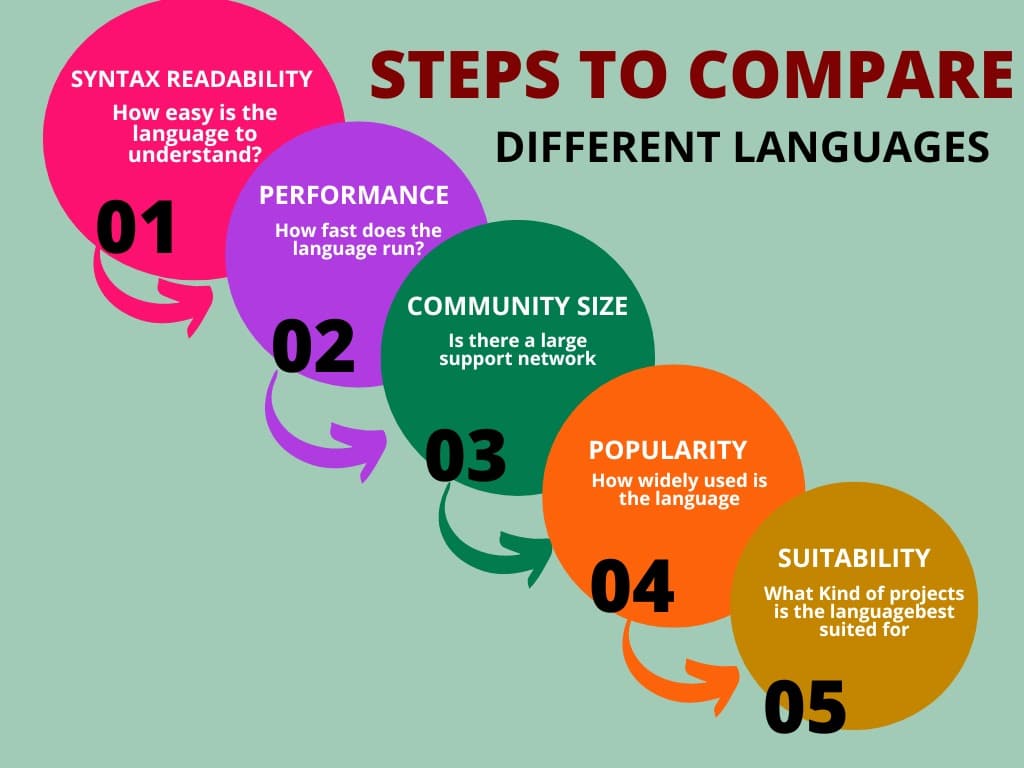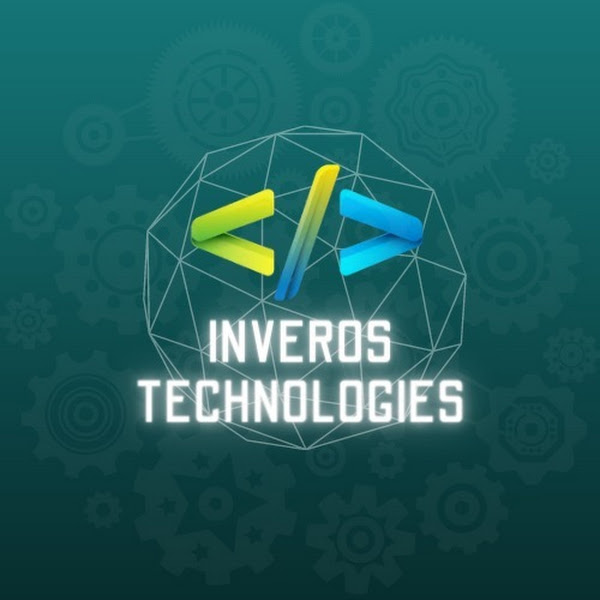Programming languages are like tools in a toolbox. Each one has its own strengths and weaknesses. The best language for you depends on what you wanna build. Are you dreaming of creating mind-blowing mobile apps, or do you prefer the logic puzzles of data science?
In this blog, we’ll break down the top 10 programming languages that will dominate your programming career 2024 and help you figure out which ones are right for your coding journey.
Understanding the Programming Landscape
Programming isn’t new. It started way back in the mid-20th century with languages like Fortran and COBOL. These were mostly used for scientific calculations and business stuff. Fast forward a few decades, and we’ve got languages like C and C++ powering operating systems and games.
With the internet explosion, languages like Java and JavaScript took center stage. They made it possible to build complex web applications and interactive websites. Nowadays, we’re in the age of big data and AI, and languages like Python and R are leading the charge.
Let’s have a look at the most in-demand programming languages of 2024.
Python
Python’s popularity has skyrocketed in recent years. Its simplicity, readability, and versatility have contributed significantly to its widespread adoption.
Why Python is a Top Choice
Readability: Python’s syntax is designed to be clear and easy to understand, making it an excellent language for beginners.
Versatility: Python can be used for a wide range of applications, including data science, machine learning, web development, automation, and scientific computing.
Large and Active Community: Python features a massive and supportive community, offering extensive resources, libraries, and forums.
Open-source: Python is open-source, meaning it’s free to use and distribute, featuring innovation and collaboration.
Python’s Role in Data Science and Machine Learning
Python has become synonymous with data science and machine learning. Its powerful libraries, such as NumPy, Pandas, Matplotlib, and Scikit-learn, provide the tools needed to manipulate, analyze, and visualize data effectively. Furthermore, frameworks like TensorFlow and PyTorch have made Python the language of choice for developing complex machine learning models.
Python for Web Development
While Python is primarily known for data science, it’s also a capable web development language. Frameworks like Django and Flask offer robust tools for building web applications quickly and efficiently. Python’s simplicity and rapid development capabilities make it a popular choice for startups and web developers alike.
Python for Automation
Python’s ability to automate tasks is another key strength. Whether you’re automating repetitive processes, scraping data from websites, or managing system administration tasks, Python can handle it. Its clear syntax and extensive libraries make it an ideal language for scripting and automation.
Career Opportunities with Python
The demand for Python programmers is skyrocketing across various industries. With its versatility and growing popularity, Python skills can open doors to exciting career paths in data science, machine learning, web development, and automation.
Common Python Questions
Is Python suitable for large-scale applications? Yes, Python can handle large-scale projects with proper architecture and optimization.
Can I build mobile apps with Python? While Python isn’t a native language for mobile app development, you can create cross-platform apps using frameworks like Kivy or build backend services for mobile apps.
How does Python compare to other languages like R or Java? Python offers a good balance of simplicity, power, and a vast ecosystem, making it a strong competitor.
Visit here to get enrolled in one of the top rated courses.
JavaScript
JavaScript is the scripting language of the web. It’s what brings websites to life, adding interactivity and dynamic elements to the user experience.
Core Strengths of JavaScript
Client-side scripting: JavaScript is primarily used in web browsers to manipulate HTML and CSS, creating interactive web pages.
Server-side development: Node.js has extended JavaScript’s capabilities to server-side development, enabling full-stack web application development.
Large ecosystem: A vast array of libraries and frameworks, such as React, Angular, and Vue, have been built around JavaScript, offering powerful tools for web development.
JavaScript Use Cases
Web development: Building interactive and dynamic websites.
Mobile app development: Creating hybrid mobile apps using frameworks like React Native or Ionic.
Game development: Developing web-based games and browser games.
Server-side development: Building web applications and APIs with Node.js.
Career Opportunities with JavaScript
JavaScript developers are in high demand due to the language’s dominance in web development. Roles include front-end developer, back-end developer, full-stack developer, and JavaScript framework specialist.
Common JavaScript Questions
Is JavaScript difficult to learn? JavaScript has a relatively gentle learning curve, especially for those with HTML and CSS experience.
What is the difference between JavaScript and ECMAScript? ECMAScript is the standard that JavaScript is based on, while JavaScript is the implementation of that standard.
I suggest you to visit here to learn more about JavaScript.
Java
Java has been a cornerstone of enterprise software development for decades. Its robustness, security, and platform independence have made it a reliable choice for building large-scale applications.
Core Strengths of Java
Platform independence: Java’s “write once, run anywhere” principle allows applications to run on different operating systems without modification.
Strong typing: Java’s static typing helps catch potential errors during compilation, leading to more reliable code.
Large and mature ecosystem: A vast collection of libraries, frameworks, and tools supports Java development.
Java Use Cases
Enterprise applications: Building robust and scalable business applications.
Android app development: Creating Android apps using Java (although Kotlin is gaining popularity).
Big data processing: Handling large datasets with frameworks like Hadoop and Spark.
Embedded systems: Developing software for devices with limited resources.
Career Opportunities with Java
Java developers are sought after in various industries, including finance, healthcare, and e-commerce. Roles include enterprise application developer, Android developer, and big data engineer.
Common Java Questions
Is Java difficult to learn? Java has a steeper learning curve compared to Python or JavaScript, but its object-oriented structure provides a strong foundation for programming.
What is the difference between Java and JavaScript? Despite the similar names, Java and JavaScript are entirely different languages with different syntax, purposes, and execution environments.
You can avail the course from Udemy by clicking Here.
C#
C# is a versatile language developed by Microsoft, primarily used for Windows applications and game development. It has gained popularity for its modern syntax and integration with the .NET framework.
Core Strengths of C#
Object-oriented: C# follows object-oriented principles, making it suitable for building complex applications.
Performance: C# offers good performance, making it suitable for game development and resource-intensive tasks.
Integration with .NET: C# seamlessly integrates with the .NET framework, providing access to a rich set of libraries and tools.
C# Use Cases
Windows applications: Building desktop applications for Windows operating systems.
Game development: Creating games using Unity or Unreal Engine.
Web development: Building web applications using ASP.NET.
Mobile app development: Developing cross-platform mobile apps using Xamarin.
Career Opportunities with C#
C# developers are in demand for roles in game development, enterprise software development, and web development.
Common C# Questions
Is C# similar to Java? C# and Java share many similarities in syntax and object-oriented features, but they have different ecosystems and strengths.
Can I use C# for data science? While C# can be used for data science, Python and R are more commonly preferred for this domain.
C++
C++ is a powerful, general-purpose programming language known for its performance and flexibility. It offers low-level control over hardware, making it ideal for demanding applications like game development, operating systems, and high-performance computing.
Core Strengths of C++
Performance: C++ is renowned for its speed and efficiency, making it the language of choice for performance-critical applications.
Low-level control: C++ provides direct access to memory and hardware, allowing developers to optimize code for maximum performance.
Flexibility: C++ supports multiple programming paradigms, including procedural, object-oriented, and generic programming.
Portability: C++ code can be compiled and run on various platforms, ensuring wide compatibility.
C++ Use Cases
Game development: Building high-performance game engines and applications.
Operating systems: Developing core components of operating systems.
System programming: Creating device drivers, embedded systems, and real-time applications.
High-performance computing: Tackling computationally intensive tasks like scientific simulations and data processing.
Career Opportunities with C++
C++ developers are in high demand for roles in game development, systems programming, and performance-critical applications.
Common C++ Questions
Is C++ difficult to learn? C++ has a steeper learning curve compared to many other languages due to its complexity and manual memory management.
When should I use C++ over other languages? C++ is ideal for applications that require maximum performance, low-level control, or portability. For less performance-critical projects, other languages might be more suitable.
React
React is a popular JavaScript library for building user interfaces. It’s known for its component-based architecture, which makes it efficient and scalable for creating complex applications.
Core Concepts of React
Components: Reusable building blocks of React applications. They encapsulate logic and UI elements.
JSX: A syntax extension for JavaScript that resembles HTML, making it easier to write UI components.
Virtual DOM: An in-memory representation of the actual DOM, optimizing performance by updating only the necessary parts.
State and Props: Mechanisms for managing data within components and passing data between components.
Advantages of Using React
Component-based architecture: Promotes code reusability and maintainability.
Virtual DOM: Improves performance by minimizing DOM manipulations.
Large community and ecosystem: Extensive support, libraries, and tools available.
Declarative style: Makes UI development more intuitive and easier to reason about.
Common Use Cases
Single-page applications (SPAs): Building dynamic web applications with a single HTML page.
Mobile app development: Creating cross-platform mobile apps using frameworks like React Native.
User interfaces for complex applications: Building interactive UIs for desktop and web applications.
Career Opportunities with React
React developers are in high demand due to the library’s popularity. Roles include front-end developer, React developer, and full-stack developer.
Common React Questions
Is React difficult to learn? React has a gentle learning curve, especially for those with JavaScript experience.
How does React compare to other UI frameworks? React’s component-based architecture and virtual DOM make it a strong contender compared to frameworks like Angular and Vue.
Can I use React for server-side rendering? Yes, you can use React for server-side rendering with frameworks like Next.js.
Click here to see my recommended course.
TypeScript
TypeScript is a superset of JavaScript that adds optional static typing. This means you can add type annotations to your code to improve code readability, maintainability, and catch potential errors early in the development process.
Core Features of TypeScript
Static typing: Optional type annotations for variables, functions, and object properties.
Interfaces: Define the shape of objects for better code organization and type safety.
Classes: Support for object-oriented programming with classes, inheritance, and interfaces.
Modules: Organize code into reusable units.
Transpilation: TypeScript code is compiled into JavaScript, making it compatible with any JavaScript environment.
Advantages of Using TypeScript
Improved code quality: Type annotations help prevent runtime errors and make code easier to understand.
Better tooling support: TypeScript provides advanced tooling features like code completion, refactoring, and error checking.
Large-scale project suitability: TypeScript is well-suited for complex and large-scale applications.
Community and ecosystem: A growing community and a rich ecosystem of libraries and frameworks.
Common Use Cases
Large-scale JavaScript applications: Building complex and maintainable web applications.
Server-side development with Node.js: Creating robust and scalable Node.js applications.
React and Angular development: Enhancing type safety and developer experience in popular frameworks.
Career Opportunities with TypeScript
TypeScript developers are in high demand due to the language’s benefits for large-scale projects. Roles include TypeScript developer, front-end developer, and full-stack developer.
Common TypeScript Questions
Is TypeScript mandatory to use with React or Angular? While not strictly required, TypeScript is highly recommended for large-scale React and Angular projects to improve code quality and maintainability.
How does TypeScript compare to JavaScript? TypeScript is a superset of JavaScript, meaning all valid JavaScript code is also valid TypeScript. TypeScript adds optional static typing and other features to enhance development.
Click here to check my recommended course for Typescript.
Next.js
Next.js is a popular React framework built on top of Node.js. It provides a structure and additional features to streamline the development of React applications.
Core Features of Next.js
Server-Side Rendering (SSR): Improves SEO, initial page load performance, and sharing on social media.
Static Site Generation (SSG): Pre-renders pages at build time for optimal performance and SEO.
Incremental Static Regeneration (ISR): Updates specific pages on demand after initial build.
API routes: Build serverless APIs within your Next.js application.
Image optimization: Automatically optimizes images for different screen sizes and formats.
Advantages of Using Next.js
Improved SEO: SSR and SSG make your website more search engine friendly.
Better performance: Faster initial page loads and smoother user experience.
Developer experience: Provides a structured approach to building React applications.
Flexibility: Offers both SSR and SSG options to fit different project requirements.
Common Use Cases
E-commerce websites: Building high-performance online stores with SEO-friendly pages.
Marketing websites: Creating fast-loading and engaging websites with content-rich pages.
Enterprise applications: Developing complex web applications with data-driven content.
Blogs and content-heavy websites: Generating static sites for optimal performance and SEO.
Career Opportunities with Next.js
Next.js developers are in high demand due to its popularity and ability to build performant and scalable web applications. Roles include Next.js developer, full-stack developer, and React developer.
Common Next.js Questions
Is Next.js mandatory for React development? No, Next.js is optional, but it offers significant benefits for building production-ready React applications.
How does Next.js differ from Create React App (CRA)? Next.js provides additional features like SSR, SSG, and API routes, while CRA is a basic starter kit for React development.
Rust
Rust is a systems programming language that emphasizes performance, reliability, and concurrency. It’s designed to prevent common programming errors like null pointer dereferences and data races, making it a popular choice for building robust and efficient software.
Core Features of Rust
Memory safety without garbage collection: Rust achieves memory safety through ownership, borrowing, and lifetimes, ensuring data integrity without the overhead of garbage collection.
Concurrency: Rust’s ownership and borrowing system enables safe and efficient concurrent programming, preventing data races.
Zero-cost abstractions: Rust’s abstractions have minimal runtime overhead, allowing for high-performance code.
Rich type system: Rust’s type system helps prevent errors and ensures code correctness.
Advantages of Using Rust
Performance: Rust code can often match or exceed the performance of C and C++ while maintaining safety guarantees.
Reliability: Rust’s focus on memory safety and concurrency safety helps prevent common programming errors.
Productivity: Rust’s powerful compiler and tooling provide excellent developer experience.
Growing ecosystem: A thriving community and a growing ecosystem of libraries and crates.
Common Use Cases
Systems programming: Building operating systems, device drivers, and other low-level software.
WebAssembly: Creating high-performance web applications.
Game development: Developing game engines and game logic.
Network programming: Building reliable and efficient network applications.
Embedded systems: Developing software for resource-constrained devices.
Career Opportunities with Rust
Rust developers are in high demand due to the language’s focus on performance and safety. Roles include systems programmer, embedded systems engineer, and backend developer.
Common Rust Questions
Is Rust difficult to learn? Rust has a steeper learning curve than many other languages due to its unique ownership and borrowing system.
When should I choose Rust over C++? Rust offers similar performance to C++ while providing memory safety and preventing common programming errors.
Go
Go, often referred to as Golang, is a statically typed, compiled programming language designed for simplicity, efficiency, and concurrency. It was developed at Google to address the challenges of building large-scale software systems.
Core Features of Go
Simplicity: Go has a clean and concise syntax, making it easy to learn and read.
Efficiency: Go compiles to native machine code, resulting in high performance.
Concurrency: Go’s built-in goroutines and channels provide efficient and easy-to-use concurrency primitives.
Garbage collection: Automatic memory management simplifies development.
Strong standard library: A rich set of packages for common tasks.
Advantages of Using Go
Speed: Go programs compile quickly and run efficiently.
Scalability: Go’s concurrency model makes it well-suited for building scalable applications.
Reliability: Go’s focus on simplicity and safety helps prevent errors.
Large and growing ecosystem: A vibrant community and a rich ecosystem of libraries and tools.
Common Use Cases
Cloud-native applications: Building microservices and cloud-based infrastructure.
Network programming: Developing web servers, APIs, and network tools.
DevOps and SRE: Automating infrastructure management and monitoring.
Data science and machine learning: Building data processing pipelines and machine learning models.
Command-line tools: Creating efficient and user-friendly command-line utilities.
Career Opportunities with Go
Go developers are in high demand, especially in cloud computing, DevOps, and infrastructure-related roles.
Common Go Questions
Is Go suitable for web development? Yes, Go is well-suited for building web applications and APIs.
How does Go compare to Python? Go offers better performance and concurrency support compared to Python, while Python often has a larger standard library.
Choosing the Right Programming Language

The first step in selecting a programming language is to clearly define your goals. What do you want to achieve with your coding skills? Here are some common goals:
Web development: Building websites and web applications
Mobile app development: Creating apps for iOS or Android
Data science and machine learning: Analyzing data and building predictive models
Game development: Creating video games
System programming: Developing operating systems, device drivers, or low-level software
Backend development: Building server-side logic for applications
Matching Your Goals to Languages
Once you’ve identified your goals, you can start to narrow down your language choices. Here’s a general overview of which languages are well-suited for different areas:
Web development: JavaScript, Python, Ruby, PHP
Mobile app development: Swift (iOS), Kotlin (Android), React Native (cross-platform)
Data science and machine learning: Python, R, Julia
Game development: C++, C#, Unity (C#)
System programming: C, C++, Rust
Backend development: Python, Java, Node.js, Go
Factors to Consider
While your goals are essential, other factors can influence your language choice:
Learning curve: Some languages are easier to learn than others.
Community support: A strong community can provide valuable resources and help.
Job market demand: Consider the popularity of languages in your desired field.
Performance requirements: Different languages have varying performance characteristics.
Project size and complexity: Some languages are better suited for large-scale projects.
Creating a Comparison Chart

To help you visualize the differences between languages, consider creating a comparison chart. You can include factors like:
Syntax readability
Performance
Community size
Popularity
Suitability for different project types
Trying Different Languages
Don’t be afraid to experiment with different languages. Many programmers are proficient in multiple languages, and this versatility can be valuable. Online resources and tutorials make it easier than ever to learn new languages.
By carefully considering your goals and exploring different languages, you can make an informed decision about which programming language to pursue.
Future Trends in Programming
The world of programming is constantly evolving, with new technologies and languages emerging all the time. To stay ahead of the curve, it’s essential to keep an eye on future trends:
Low-code/No-code Development: Tools that allow users to create applications with minimal coding knowledge are gaining traction. While these tools might not replace traditional programming entirely, they will democratize software development.
Artificial Intelligence (AI) and Machine Learning (ML): AI and ML are transforming the way we build software. Expect increased integration of these technologies into programming languages and frameworks.
Quantum Computing: While still in its early stages, quantum computing has the potential to revolutionize problem-solving. New programming paradigms and languages will be needed to harness the power of quantum computers.
Cybersecurity: As cyber threats become more sophisticated, there will be a growing demand for programmers with expertise in security.
Blockchain Technology: Beyond cryptocurrencies, blockchain has applications in various industries. Developers with blockchain knowledge will be in high demand.
Internet of Things (IoT): The number of connected devices is exploding, creating opportunities for programmers to develop IoT applications and platforms.
Edge Computing: Processing data closer to the source will become increasingly important. Developers with expertise in edge computing will be sought after.
By staying informed about these trends, you can position yourself for success in the ever-changing world of programming.
Now, let’s move on to the conclusion.
Conclusion
So, we’ve covered a lot of ground when it comes to programming languages. The key takeaway is that there’s no one-size-fits-all answer. The best language for you depends on your specific goals, interests, and the nature of your project.
Keep Learning and Growing
The world of programming is constantly evolving, so it’s essential to stay curious and continue learning. New languages, frameworks, and technologies emerge all the time. By staying up-to-date, you’ll be able to adapt to the changing landscape and unlock new opportunities.
Final Thoughts
Remember, the most important thing is to start coding and have fun. Experiment with different languages, build projects, and don’t be afraid to make mistakes. With dedication and practice, you can master the art of programming and achieve your goals.
Happy coding!




Pingback: Top Free AI Image Generators